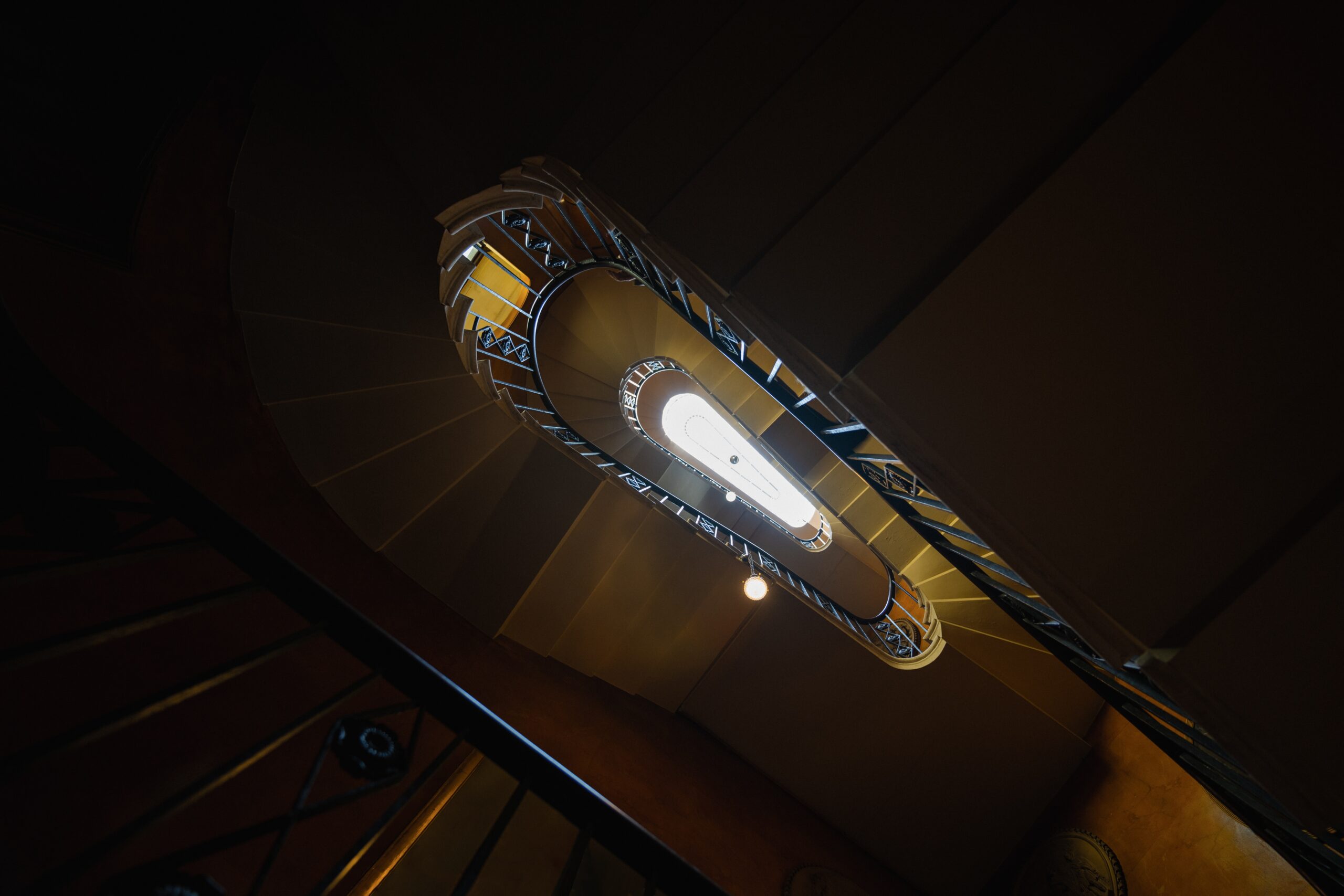Are you planning a renovation project for a historic building in the UK? If so, one of the most important considerations is the choice of materials. Preserving the authenticity and historical significance of the structure while ensuring its durability and functionality can be a delicate balancing act. In this article, we will explore the recommended materials for historic building renovations in the UK, providing valuable insights to help guide you through this exciting endeavor. Historic building renovations in the UK require careful consideration when it comes to choosing the appropriate materials. Preserving the character and charm of these buildings is of utmost importance, and selecting the right materials is essential in achieving this goal. In this article, we will explore the recommended materials for various aspects of historic building renovations, including roofing, external walls, windows and doors, interior flooring and walls, joinery, plumbing and wiring, insulation, heating, and paint and finishing materials.
1. Roofing Materials
1.1. Natural Slate
Natural slate is a popular choice for roofing in historic building renovations. It offers durability, longevity, and a visually appealing aesthetic. The natural variation in color and texture adds character to the roof, enhancing the overall charm of the building. Additionally, slate is fire-resistant and requires minimal maintenance, making it an excellent choice for preserving the authenticity of historic structures.
1.2. Clay Tiles
Clay tiles are another suitable roofing option for historic buildings. They have been used for centuries and are still widely available today. Clay tiles provide a distinctive look and are often associated with traditional British architecture. They are durable, weather-resistant, and environmentally friendly. The wide range of colors and finishes available allows for customization while maintaining the building’s historical integrity.
1.3. Wooden Shingles
Wooden shingles offer a unique and rustic appearance to historic building roofs. They are commonly used in buildings with a traditional or cottage-style design. Wooden shingles are lightweight, making them suitable for roofs with low-pitched angles. However, they require regular maintenance and treatment to prevent rot and decay. Proper installation and periodic inspections are crucial to ensure the longevity of wooden shingles.
2. External Walls Materials
2.1. Lime Mortar
Lime mortar is a traditional material used in historic building renovations for its compatibility with older masonry. Unlike modern cement-based mortars, lime mortar allows the walls to breathe, preventing moisture damage. It also provides flexibility and absorbs movement, reducing the risk of cracks. Lime mortar is available in different formulations to match the original mortar used in the building’s construction, ensuring a seamless restoration.
2.2. Stone
Stone is a classic material that has been used in the construction of historic buildings throughout the UK. It offers durability, timeless beauty, and a sense of history. When renovating external walls, the use of natural stone can enhance the authenticity of the building. It is essential to source the appropriate type of stone to match the existing structure accurately. Professional stonemasons should be consulted to ensure proper installation and restoration techniques are employed.
2.3. Brick
Brick is another commonly used material in historic building renovations. It provides strength, durability, and aesthetic appeal. Brickwork can be cleaned and restored to bring back its original charm. Different styles of brick can be used to match the existing architecture, whether it is Flemish bond, English bond, or any other historic brickwork pattern. Attention to detail and skillful craftsmanship are crucial to maintaining the integrity of the building.
3. Windows and Doors Materials
3.1. Timber
Timber windows and doors are highly recommended for historic building renovations due to their traditional appearance and versatility. They can be customized to match the original design, ensuring a seamless integration with the building’s architectural style. Timber offers durability, insulation, and a natural aesthetic. It is important to use sustainably sourced timber and protect it with appropriate treatments to prolong its lifespan.
3.2. Steel
Steel windows and doors can be an alternative for buildings with an industrial or Art Deco influence. They offer a sleek and contemporary look while maintaining the authenticity of historic structures. Steel frames provide strength and durability, and modern manufacturing techniques ensure energy efficiency. Consideration should be given to preserving any existing original steel windows and doors, as they contribute significantly to the building’s character.
3.3. Stained Glass
Stained glass windows add a touch of elegance and intricacy to historic buildings. They are particularly iconic in churches, cathedrals, and other religious structures. Stained glass can be restored or reproduced to match the original design, with expert artisans recreating the detailed patterns and colors. The use of stained glass in windows helps to maintain the historical significance of the building’s interior while allowing natural light to create a mesmerizing ambiance.
4. Interior Flooring Materials
4.1. Oak
Oak flooring is a popular choice for historic building renovations, as it offers a timeless and durable option. It complements a range of architectural styles and can be finished to achieve the desired aesthetic, whether it be rustic or polished. Oak flooring can be installed in various patterns, such as herringbone or chevron, to add visual interest. Proper maintenance, including regular cleaning and occasional refinishing, will ensure the longevity of oak floors.
4.2. Terracotta Tiles
Terracotta tiles are another suitable option for historical interior flooring. They provide warmth, character, and a rustic charm reminiscent of traditional British homes. Terracotta tiles can be handmade or machine-made, with different finishes and sizes available. Their durability and ability to retain heat make them suitable for areas such as kitchens and conservatories. Regular sweeping and occasional resealing are necessary to maintain the tiles in good condition.
4.3. Carpet
Carpeting can be an appropriate choice for areas in historic buildings where a softer underfoot feeling is desired. It adds warmth, insulation, and comfort to rooms such as bedrooms and living areas. When selecting carpet for historic renovations, it is advisable to choose styles and patterns that reflect the building’s era. Historic color palettes and designs can be used to ensure a seamless integration with the overall interior design.

5. Interior Walls Materials
5.1. Lime Plaster
Lime plaster is a traditional material that has been used in the construction and restoration of historic buildings for centuries. It offers breathability, flexibility, and compatibility with older masonry. Lime plaster allows the walls to regulate moisture naturally, preventing issues such as dampness and mold. It provides a smooth and decorative finish that can be tinted or whitewashed to suit the desired aesthetic of the interior.
5.2. Exposed Brick
Exposed brick walls are a popular trend in historic building renovations, showcasing the authenticity of the structure. Bricks can be cleaned, restored, or left untouched to create an industrial or rustic look. Exposed brick walls add texture, character, and a sense of history to interior spaces. Care should be taken to preserve the structural integrity of the walls and address any moisture-related issues before exposing the brickwork.
5.3. Wattle and Daub
Wattle and daub is an ancient construction technique that involves weaving wooden strips (wattle) and applying a mixture of soil, clay, sand, and straw (daub) to create interior walls. This traditional method can be used in historic building renovations to replicate the original construction. Wattle and daub walls offer a unique and natural aesthetic, preserving the building’s historical charm.
6. Joinery Materials
6.1. Oak
Oak is a popular material for joinery in historic building renovations. It offers strength, durability, and a timeless beauty. Oak joinery elements such as doors, windows, and staircases add character and authenticity to interiors. Restoration and preservation techniques can be employed to bring out the natural beauty of the oak. Proper maintenance, including periodic refinishing, will ensure the longevity of oak joinery.
6.2. Mahogany
Mahogany is a hardwood known for its rich color and natural beauty. It has been used in historic buildings for centuries, particularly for high-quality joinery. Mahogany joinery elements create a sense of elegance and luxury in interiors. The wood can be varnished or stained to enhance its natural luster and protect it from wear and tear. Regular cleaning and maintenance will help preserve the beauty of mahogany joinery.
6.3. Walnut
Walnut is another hardwood that is highly regarded for its beauty and durability. It has been used in historic buildings for its rich, dark tones and intricate grain patterns. Walnut joinery adds a touch of sophistication and class to interior spaces. To maintain its natural beauty, walnut joinery should be regularly cleaned and treated with appropriate finishes.

7. Plumbing and Wiring Materials
7.1. Copper Pipes
Copper pipes have been used for plumbing in historic buildings for their longevity and resistance to corrosion. They are a durable and reliable option for ensuring proper water flow and preventing leaks. Copper pipes can be seamlessly integrated into historic buildings, maintaining the authenticity of their plumbing systems. Regular inspections and maintenance are necessary to identify any issues and address them promptly.
7.2. Steel Pipes
Steel pipes are another suitable option for plumbing in historic renovations. They offer strength, durability, and resistance to high pressure. Steel pipes can be used for both water supply and drainage systems. When integrated with appropriate fittings, they provide a visually appealing and historically accurate solution. Regular inspections and maintenance are necessary to prevent corrosion and maintain the functionality of steel pipes.
7.3. Period-Appropriate Lighting Fixtures
When it comes to the wiring and lighting in historic buildings, period-appropriate fixtures should be considered for a cohesive and authentic design. Whether it is chandeliers, sconces, or pendant lights, selecting lighting fixtures that reflect the era of the building enhances its historical charm. It is crucial to ensure that all electrical installations comply with current safety standards while maintaining the aesthetic integrity of the space.
8. Insulation Materials
8.1. Sheep’s Wool
Sheep’s wool insulation is an environmentally friendly option for historic building renovations. It offers excellent thermal performance, effective moisture regulation, and exceptional sound absorption. Sheep’s wool insulation is particularly suitable for older buildings, as it allows walls to breathe while reducing heat loss. It is easy to install and can be easily removed and reused if necessary, making it a sustainable choice for insulation.
8.2. Cork
Cork insulation is a natural and renewable material that provides excellent thermal and acoustic properties. It is lightweight, non-toxic, and resistant to moisture and mold. Cork insulation can be used in walls, floors, and roofs of historic buildings, enhancing their energy efficiency and comfort levels. Its natural fire resistance also adds an extra layer of safety to the building.
8.3. Recycled Paper
Recycled paper insulation is an eco-friendly option that offers good thermal performance and sound absorption. It is made from recycled newspapers and other paper waste, reducing its environmental impact. Recycled paper insulation is easy to install, environmentally safe, and provides effective insulation for historic buildings. It also assists in reducing energy consumption and lowering utility costs.
9. Heating Materials
9.1. Traditional Radiators
Traditional radiators, such as cast iron or steel column radiators, are a suitable option for heating in historic building renovations. They add a touch of nostalgia and elegance to the interiors while providing efficient heat distribution and retention. Traditional radiators can be restored or replicated to match the original design, with various finishes and sizes available.
9.2. Underfloor Heating
Underfloor heating is a contemporary heating solution that can be discreetly installed in historic building renovations. It offers efficient and comfortable heat distribution throughout the space, eliminating the need for unsightly radiators. Underfloor heating systems can be installed beneath various flooring materials, such as stone, tiles, or wood, providing a cozy atmosphere without compromising the historic integrity of the building.
9.3. Gas and Electric Fires
Gas and electric fires can be a practical and aesthetically pleasing option for heating certain areas within historic buildings. Gas fires offer a traditional and realistic flame effect, while electric fires provide versatility and ease of installation. Both options can be chosen to complement the architectural style of the building and create a cozy ambiance in living rooms, bedrooms, or other spaces.
10. Paint and Finishing Materials
10.1. Traditional Lime Paint
Traditional lime paint is recommended for historic building renovations as it is breathable and compatible with older masonry. Lime paint enhances the overall appearance of the building’s interior and exterior while allowing the walls to regulate moisture naturally. It creates a soft, textured finish that adds character and authenticity to the space. Lime paint comes in a wide range of colors, allowing for endless possibilities in achieving the desired aesthetic.
10.2. Natural Oil-based Paint
Natural oil-based paints are another suitable option for historic building renovations. They offer durability, vibrancy, and a low environmental impact. Oil-based paints create a smooth and glossy finish, making them ideal for woodwork and trim. They are available in a variety of colors and can be custom-mixed to match the original paint scheme of the building.
10.3. Wood Stains and Varnishes
Wood stains and varnishes are essential for preserving and enhancing the natural beauty of wooden surfaces in historic buildings. They protect the wood from moisture, UV damage, and wear and tear while allowing its grain and texture to shine through. Wood stains and varnishes come in various shades and finishes, providing options for customization while maintaining the historical authenticity of the building.
In conclusion, the selection of appropriate materials for historic building renovations in the UK is crucial in preserving the charm and character of these structures. From the roofing materials to the finishing touches, each aspect plays a significant role in maintaining the building’s historical integrity. By choosing materials that are compatible, durable, and visually appealing, you can ensure a successful restoration project that respects the rich heritage of these architectural gems. Whether it’s natural slate for the roof, lime plaster for the walls, or oak for the joinery, each material contributes to creating a cohesive and authentic renovation that will stand the test of time.











